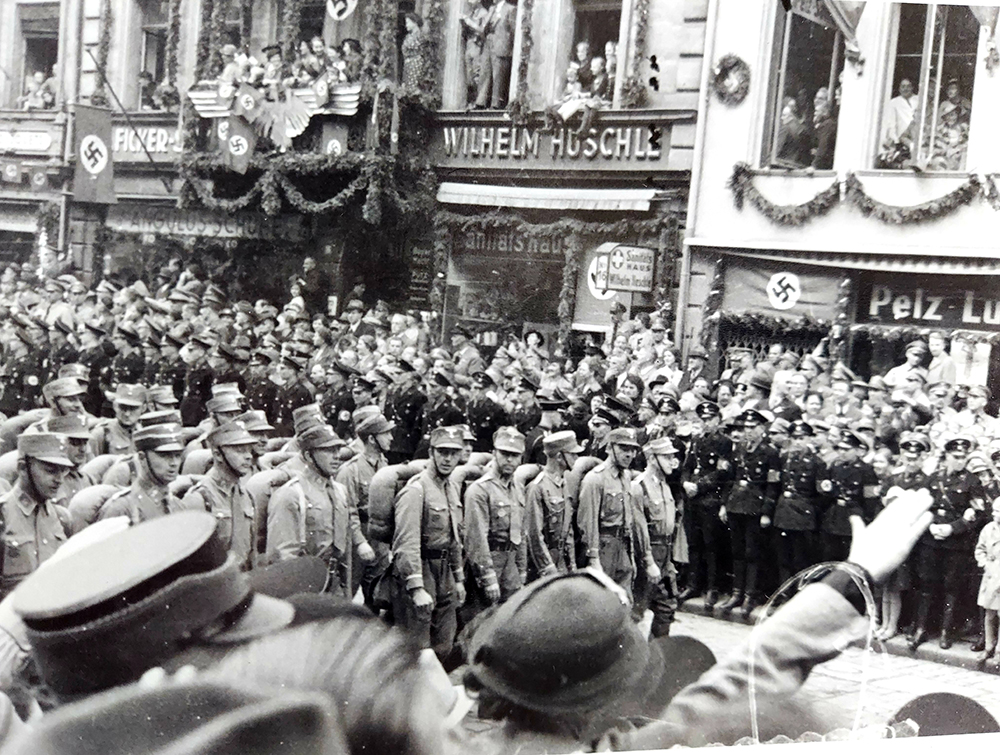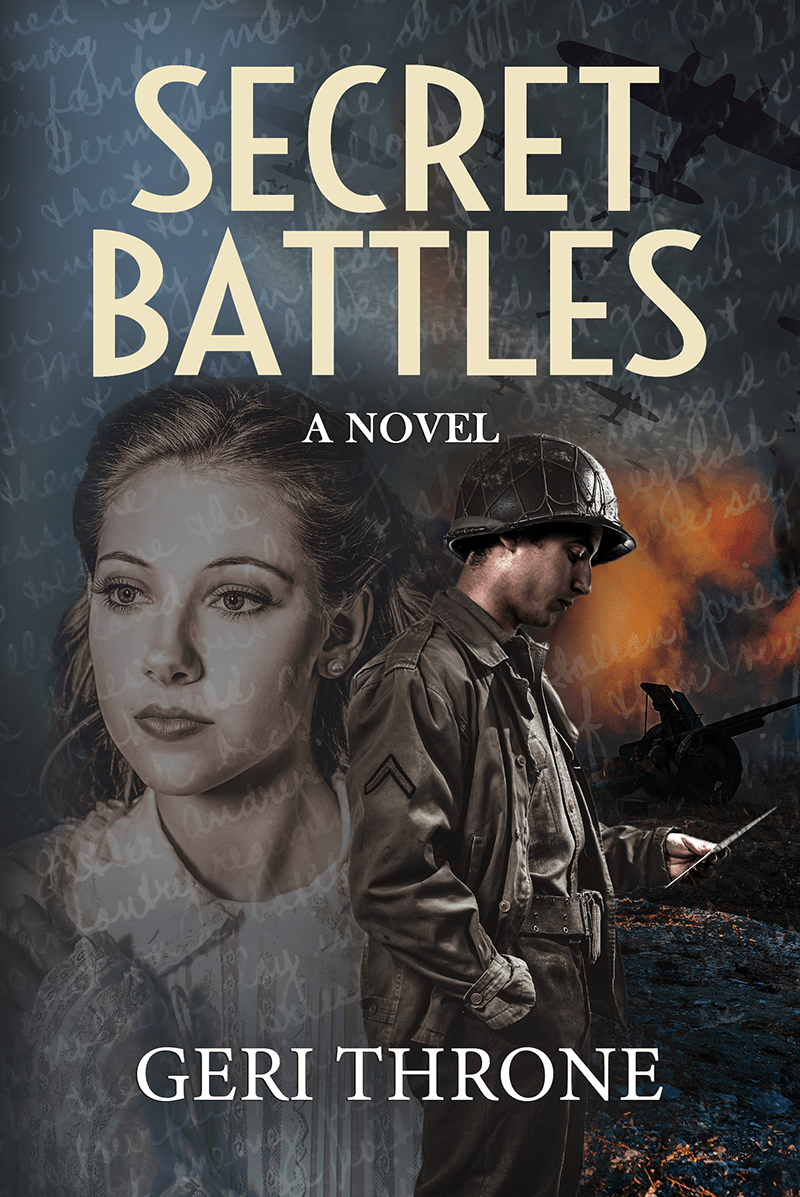
After almost two years in Bavaria, it was time for my husband and I to return to the United States. As I retrieved items we had stored in our German landlord’s attic, I came across a decades-old undeveloped roll of film.
“It must have belonged to the last owners of this house,” our landlord said. “Keep it. Who knows what’s on it?”
Muhlhof, the suburb of Nuremberg in which we lived, was still populated with many Nazi sympathizers, he said. He knew that because of the large number of votes cast for Nazi-leaning politicians in local elections. “Otherwise, you would never suspect it, because no one ever speaks aloud of these things.”
I never expected what the roll of film would reveal – not family snapshots or travel photos, but the work of someone with a good eye who witnessed history. The photographer recorded more than the Nazi’s gargantuan rallies held in Nuremberg from 1933 to 1938. He also captured his fellow countrymen’s fascination with those obscene displays of power.
The rallies must have been hard to ignore. They lasted for days and spilled into downtown Nuremberg. Goose-stepping troops paraded through the streets. Huge swastika banners hung from buildings. The rallies included military maneuvers, speeches, bonfires, fireworks, bellicose music and opera performances.
The anonymous photographer, a resident of our tidy, attractive house, surely shared his countrymen’s fixation. I pictured a man traveling by bus and trolley car to downtown Nurnberg, filled with excitement, camera in hand. Once there, he records everyday people caught up in carefully crafted propaganda: older women in traditional folk costumes greeting uniformed Nazi soldiers; a woman holding a small child standing close to a long line of passing soldiers; crowds of well-dressed men and women lining streets, some with arms outstretched in Nazi salutes. In downtown Nuremberg, he captures Nazi flags draped from buildings and storefronts. At the rally grounds, he is fascinated by columns of soldiers marching into a massive field, filling every corner, until they seem to stretch as far as the eye could see. The atmosphere is like a festival.
In quieter corners of Nurnberg, the photographer spots a beautiful young woman walking toward his camera; two priests strolling past storefronts; thirteen prosperous, middle-aged men lining up for a group shot.
All these photos share one similarity. No one in them is smiling. Their expressions are determined, unreadable.

So interesting. Would love to see the photos.
Thanks, Karen. I’ll be sure to make that happen.
What a find! Compelling photo! I can’t wait to read the book.
Thank you, Mari Ferrari!
It makes me think of America, January 6, 2021.
The Nurnberg rallies seemed to have a chilling order to them, but I’ve read accounts that hinted of chaos behind all that flag waving. More like garbage, public defecation and debauchery than brutal violence, though. The people of Nurnberg, it seemed, mostly highly approved of Der Fuhrer.
I was nine years old when Israel was born. For me it is a safe haven for Jewish people after the Holocaust and I began searching, how could this happen? I’m grateful for your book…and your experience.
I always asked myself that question, too. My research for this novel made the answer disturbingly clear. Average persons were mesmerized by a hate-spewing egomaniac. He made them feel proud and powerful. They became so enthralled with him that they ignored evidence of the Holocaust in their backyards. They followed him blindly into a fruitless war. Those who saw the truth were too few in number to stop him.